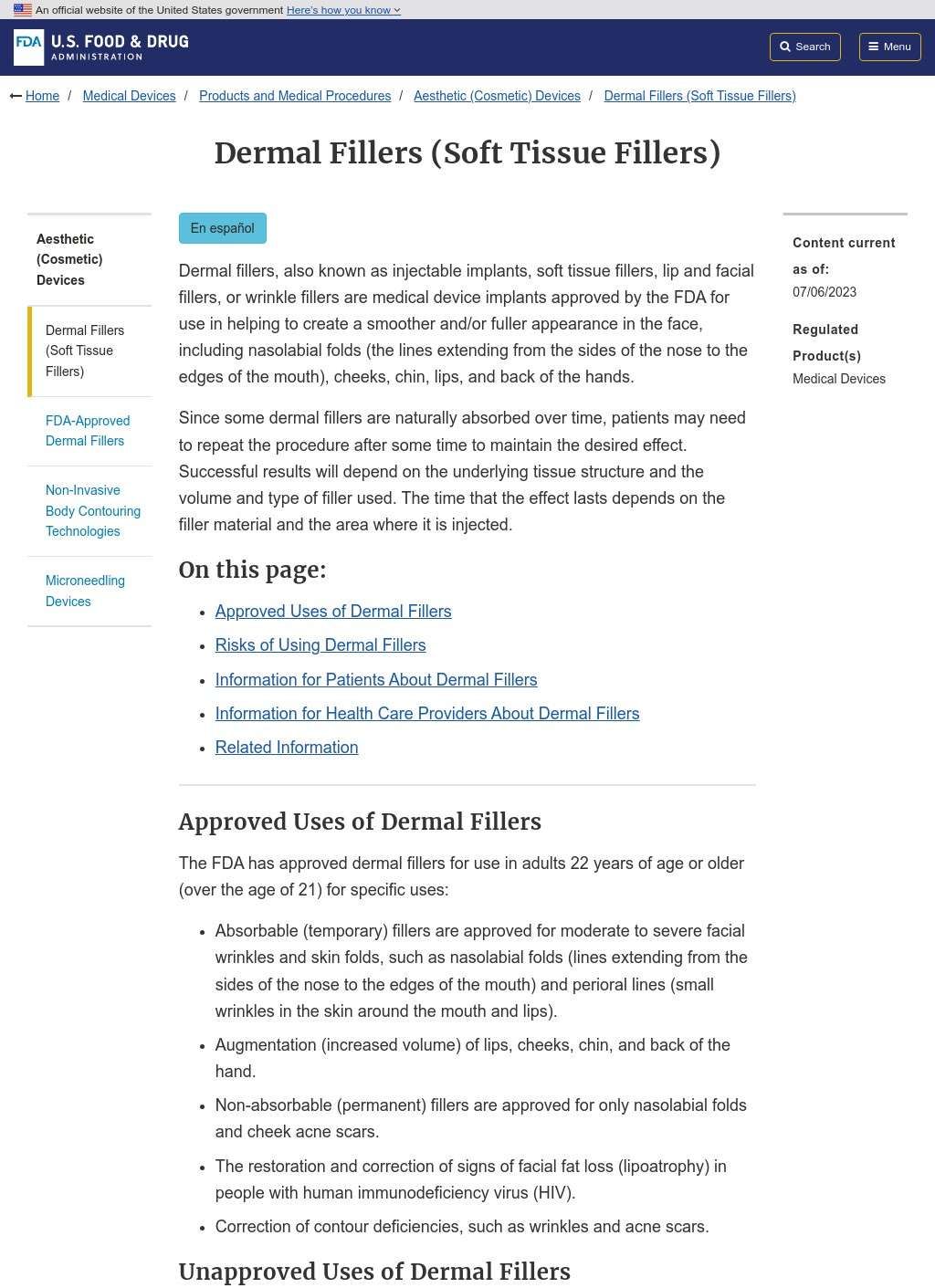The FDA stands as the primary regulatory authority for dermal fillers in the United States, making their website an essential resource for anyone seeking factual, unbiased information about these cosmetic treatments. When you're considering injectable fillers, understanding the regulatory framework and safety standards becomes just as important as knowing which treatment might suit your needs.
Their dermal filler section offers comprehensive coverage of approved products currently available in the US market. The site breaks down different filler types – from hyaluronic acid-based products like Juvederm and Restylane to calcium hydroxylapatite options like Radiesse. Each category gets thorough treatment, explaining how these substances work, their typical applications, and expected longevity. You'll find detailed charts comparing various FDA-approved fillers, their intended uses, and duration of effects.
What sets the FDA resource apart is its frank discussion of potential complications and adverse events. Rather than glossing over risks, the site provides detailed warnings about everything from minor bruising to rare but serious complications like vascular occlusion. They maintain a searchable database of adverse event reports, letting consumers and practitioners track real-world safety data. This transparency helps patients make informed decisions based on actual reported outcomes, not just marketing claims.
The consumer protection aspect shines through in their guidance on choosing qualified providers. They emphasize the importance of seeking treatment from licensed healthcare professionals and provide red flags to watch for when evaluating potential practitioners. The site warns against illegal fillers, counterfeit products, and "filler parties" – addressing common scenarios where patients might encounter unsafe practices. Their alerts section regularly updates with new safety concerns or product recalls.
For healthcare providers, the FDA offers technical guidance documents, injection technique recommendations, and continuing education resources. They provide detailed labeling requirements, manufacturing standards, and clinical trial data for approved products. This professional-level content helps practitioners stay current with regulatory requirements and best practices. The site includes guidance on managing complications, reporting adverse events, and understanding contraindications for different patient populations.
The FDA's approach to presenting information strikes a careful balance – technical enough for medical professionals yet accessible to general consumers. They use clear language to explain complex biological processes, how fillers integrate with facial tissues, and why certain injection techniques carry higher risks. Visual aids, including anatomical diagrams and before-after photos from clinical trials, help illustrate key concepts without sensationalizing results.
Contact information appears prominently throughout the site, with multiple ways to report problems or ask questions. They provide dedicated hotlines for adverse event reporting, email addresses for consumer inquiries, and links to regional FDA offices. The MedWatch system allows both patients and providers to submit detailed reports about complications, contributing to ongoing safety monitoring. Business hours for different departments are clearly listed, along with expected response times for various types of inquiries.
